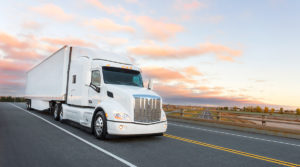Five Predictions for Fleets
08 Dec 2020, Posted by in Industry Information Unanswered questions and rapid evolution have always been part of trucking, but today fleets seem to be facing an endless list of uncertain future scenarios that could and almost certainly will change their businesses in one way or another. No one has developed a reliable crystal ball yet, but here are five predictions that look like sure things to impact anyone running a truck fleet over the next decade or so.
Unanswered questions and rapid evolution have always been part of trucking, but today fleets seem to be facing an endless list of uncertain future scenarios that could and almost certainly will change their businesses in one way or another. No one has developed a reliable crystal ball yet, but here are five predictions that look like sure things to impact anyone running a truck fleet over the next decade or so.
ONE: Clean Air: Trucking is in the midst of the next clean air initiative, which enters the end of Phase 1 in 2017 to be followed by an asyet finalized Phase 2. And given efforts in California and elsewhere to push for even lower truck emissions, it’s safe to predict clean air initiatives will continue to reshape trucks and trucking. Alternative fuels will gain market share, not based on a cost advantage over diesel, but on their GHG emissions profiles. Smaller engines mated to automatic transmissions will become the standard spec, as will aerodynamics that will reshape both tractors and the trailers they pull.
TWO: Regulation: Federal regulation isn’t going to slow up. While the current uncertainly surrounding hours-of-service and electronic logging devices will be cleared up soon, it’s highly probable that regulators will then move to a more scientifically valid approach to driver fatigue. The era of big data is not only driving new logistics imperatives but will also be adopted by regulators to usher in new approaches to measuring and monitoring truck and fleet safety.
THREE: Autonomous Vehicles: Trucks represent the first viable application of this technology. However, even over the next 10 years, we’re looking at highly automated trucks, not autonomous ones without drivers. Look for a rapid shift to more advanced smart safety systems such as automated emergency braking as well as wide deployment of remote truck and driver management systems powered by telematics. Platooning also looks promising, but its benefits will be limited to specific applications that can take advantage of its unique operating limitations.
FOUR: Last-Mile: The most expensive part of the delivery for the new class of giant retailers, look for Amazon and others to push for a logistics overhaul in the final leg of online purchases. While drones are more talk than reality at this point, some type of disruptive technology is likely to bring that change. If you doubt that, talk to taxi fleets about Uber and other shared ride services.
FIVE: Infrastructure: Congestion and limits on highway investment will bring pressure to end long-haul routes, which in turn will allow radical changes to tractor designs optimized for efficiency. And the never-ending shortage of qualified drivers will only reinforce that decision. Also look for those operational changes to bring a reorganization of fleet structures, with mega fleets and their small contractors pushing out the mid-sized fleets that won’t have the operational flexibility to adapt.
